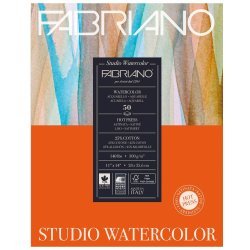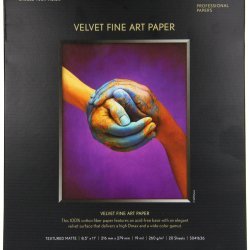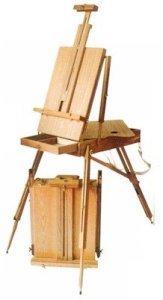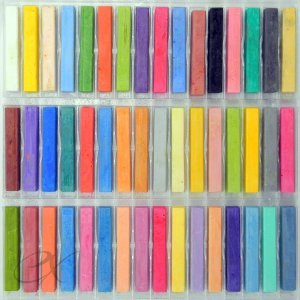Because of their versatility and ease of use, chalk pastels have become a popular choice for many artists. Mistakes can also be removed easily which is also a great plus. Below we outline some suggestions for working with pastels. For details about the different types of chalk pastels, visit our article Chalk Pastels.
Materials:
•Paper or canvas
•Easel
•Hard chalk pastels, Soft chalk pastels, and/or pencil pastels
•Blending tool such a cotton ball or swab, soft cloth, etc.
•Fixative Spray
How to Use Chalk Pastels


1. Select the right paper for your project. The art will be affected by the color and texture used. Fabrian paper is commonly used and it comes in a variety of colors. Other types of papers include velour for soft effects, sanded paper for details and textured paper to give a ribbed look. To purchase Fabriano paper visit this page. To purchase Velour paper, visit this page.

2. Place the paper on the easel. Using an easel will diminish the amount of chalk dust that remain on the paper. To provide cushion, you can place several papers behind your piece. The easel shown above comes with a drawer to store supplies. You can find out more about about is by visiting this page.
3. To create broad strokes, hold the pastel chalk broadside between your thumb and index finger.
4. For thin lines, use either a pencil pastel or a sharpened hard pastel chalk while holding the chalk at an angle.
5. To create lighter tones, hold the chalk with less pressure.
6. To create darker tones, apply more pressure while drawing.
7. To blend two adjacent strokes of color, use your finger to produce a burnished look. Remember to clean your fingers often to avoid undesirable effects.
8. To create brushing effects, use blending tools such as cotton swabs, soft dry paint brushes, or tissues.
9. Finally, after the piece is completed, be sure to use a spray fixative to hold the color in place. A common spray to use is hair spray. Be sure to spray evenly. The painting will appear darker after this process, but it should dry out within a couple of hours.



